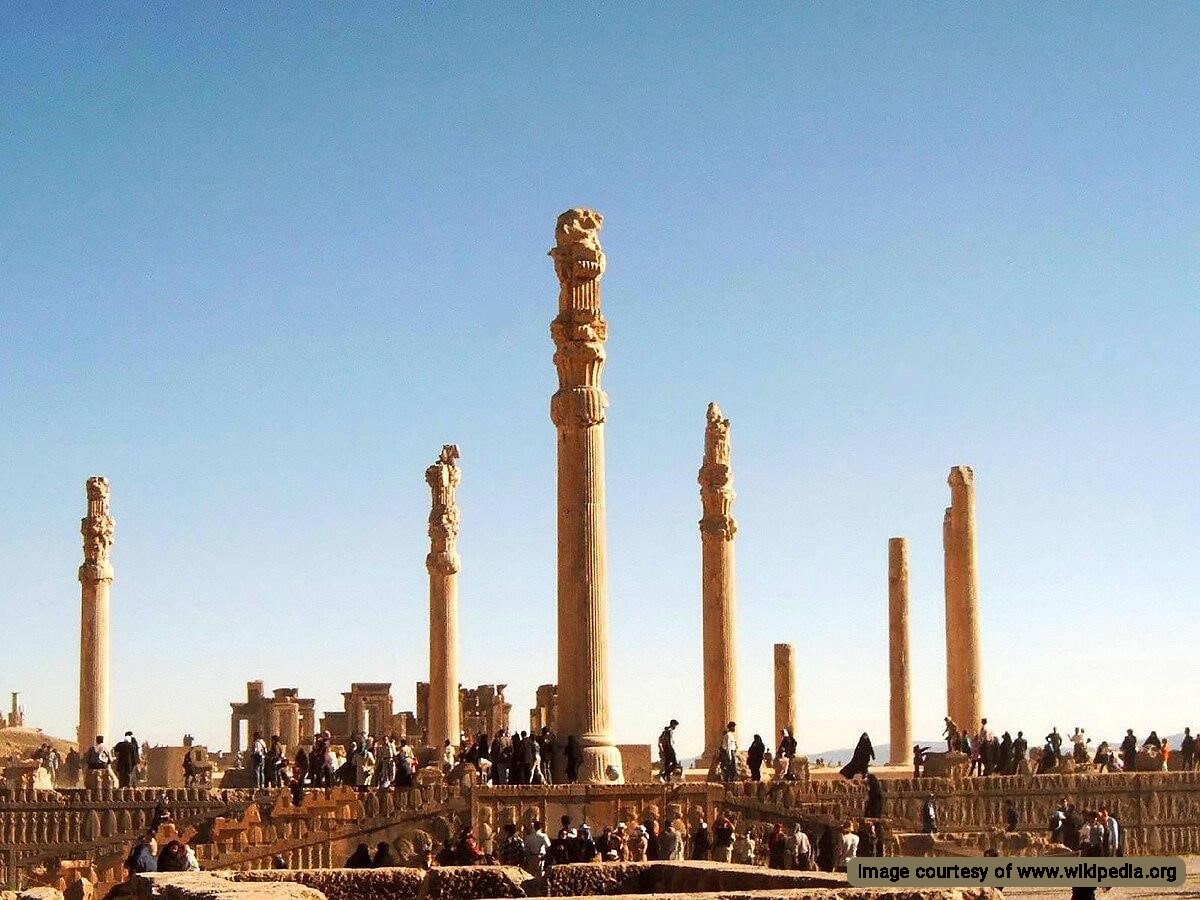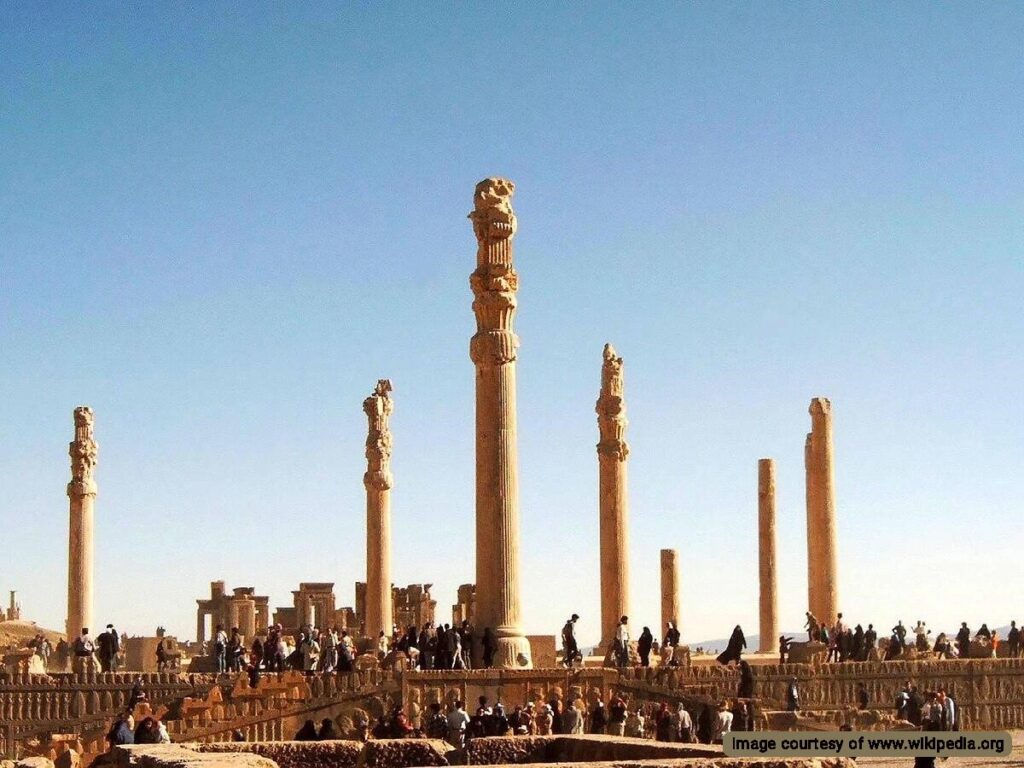
Located in the ancient city of Persepolis, Iran, Apadana Palace is a remarkable testament to the grandeur of the Achaemenid Empire. This architectural masterpiece, dating back to the 6th century BCE, offers a fascinating journey through history and a unique insight into the artistic and cultural achievements of ancient Persia.
The word “Apadana” is Old Persian and refers to a type of monumental audience hall or palace. In the context of the Achaemenid Empire, an Apadana served as a grand reception hall for the king to receive nobles, officials, and foreign dignitaries.
These structures were often adorned with elaborate artworks and architectural features, symbolizing the wealth and power of the empire. The term “Apadana” is closely associated with the opulence and grandeur of ancient Persian architecture and royal customs.
Apadana Palace, A Marvel of Architecture
As you approach Apadana Palace, the sheer scale and intricate design immediately captivate you. The grand staircase, adorned with detailed reliefs depicting scenes from ancient Persian life and mythology, leads to the imposing entrance. The colossal gate and impressive façade create a monumental and awe-inspiring sight.
The grand staircase is particularly notable for its detailed reliefs, which depict scenes of tribute-bearing representatives from various nations of the Achaemenid Empire. These reliefs highlight the empire’s diversity and dominance, showcasing the different cultures and peoples that were part of the Achaemenid realm. The staircase itself is a marvel of engineering, designed to accommodate large processions and ceremonies.
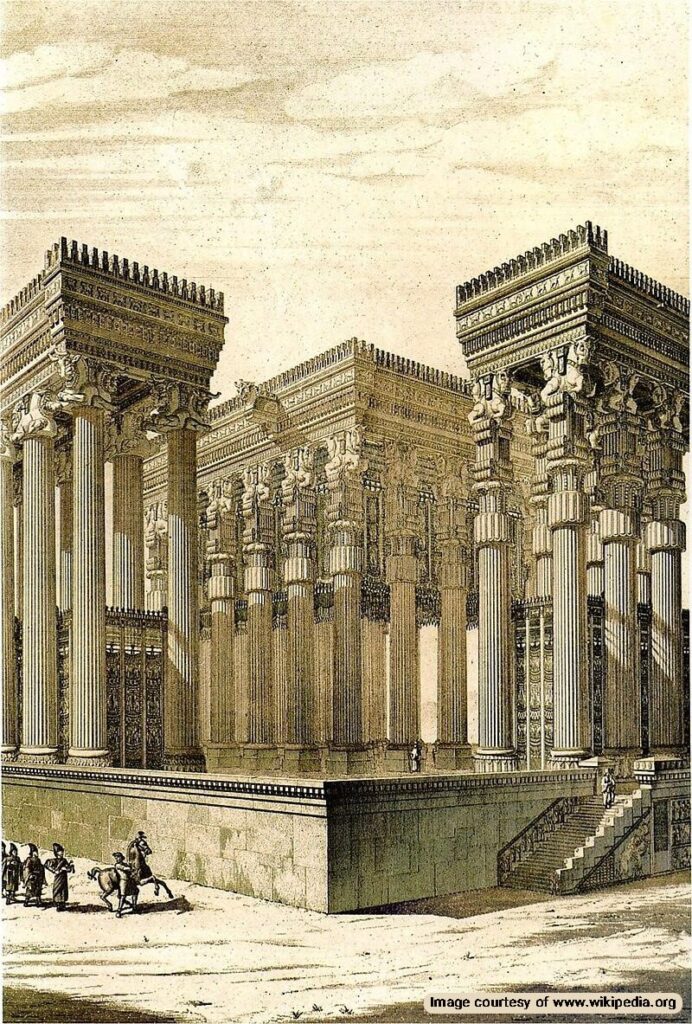
Inside Apadana Palace
Inside, the palace continues to amaze. The grand hall, with its towering columns and elaborately decorated capitals, exudes regal splendor. The walls are adorned with mesmerizing carvings and bas-reliefs that tell stories of conquests, royal ceremonies, and the diverse peoples of the Achaemenid Empire. Every inch of the palace showcases the artistic and architectural prowess of its creators.
The grand hall, known as the Apadana Hall, was used for official audiences and ceremonies. It could accommodate thousands of people, reflecting the power and wealth of the Achaemenid kings. The columns, each standing 24 meters tall, are topped with capitals depicting twin-headed bulls, lions, or eagles, symbolizing strength and protection. These capitals are masterpieces of Achaemenid art, combining elements of Persian, Median, and Mesopotamian styles.
The walls of the grand hall are covered with bas-reliefs that depict various scenes from the life of the empire. These include royal processions, battles, and religious rituals. One of the most famous reliefs shows Darius the Great seated on his throne, receiving tribute from representatives of the subject nations. This scene symbolizes the unity and diversity of the Achaemenid Empire.
Apadana Architectural Features
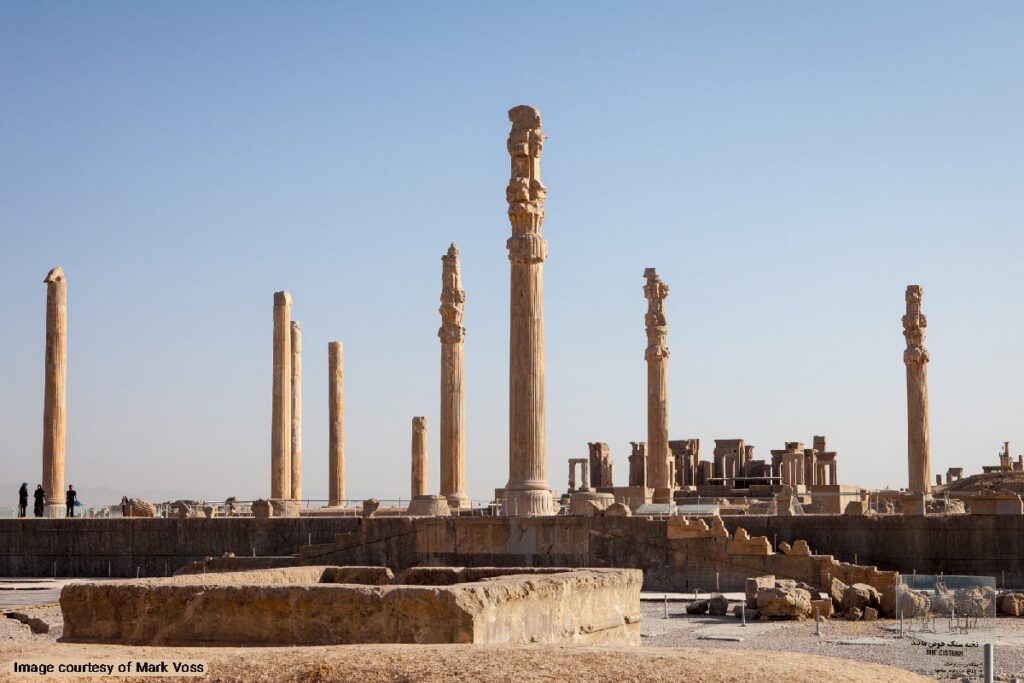
The Apadana Palace is a large hypostyle hall, meaning its roof is supported by columns. Originally, the palace had 72 columns, each standing 24 meters tall. Today, 13 of these columns still stand, offering a glimpse into the palace’s former glory. The columns are topped with elaborately carved capitals, often depicting twin-headed bulls, lions, or eagles, symbolizing strength and protection.
The palace’s walls were made of clay with a brick façade, and the inner walls were covered with glazed brick reliefs featuring soldiers, mythical creatures, and floral motifs. The monumental stairways on the north and east sides are adorned with rows of beautifully executed reliefs showing scenes from the New Year’s festival and processions of representatives from twenty-three subject nations of the Achaemenid Empire.
The architectural design of Apadana Palace reflects the Achaemenid emphasis on grandeur and symmetry. The layout of the palace is based on a grid pattern, with the grand hall at the center and smaller rooms and courtyards arranged around it. This design allowed for efficient movement of people and goods, as well as effective control of the space during ceremonies and audiences.
Historical Significance
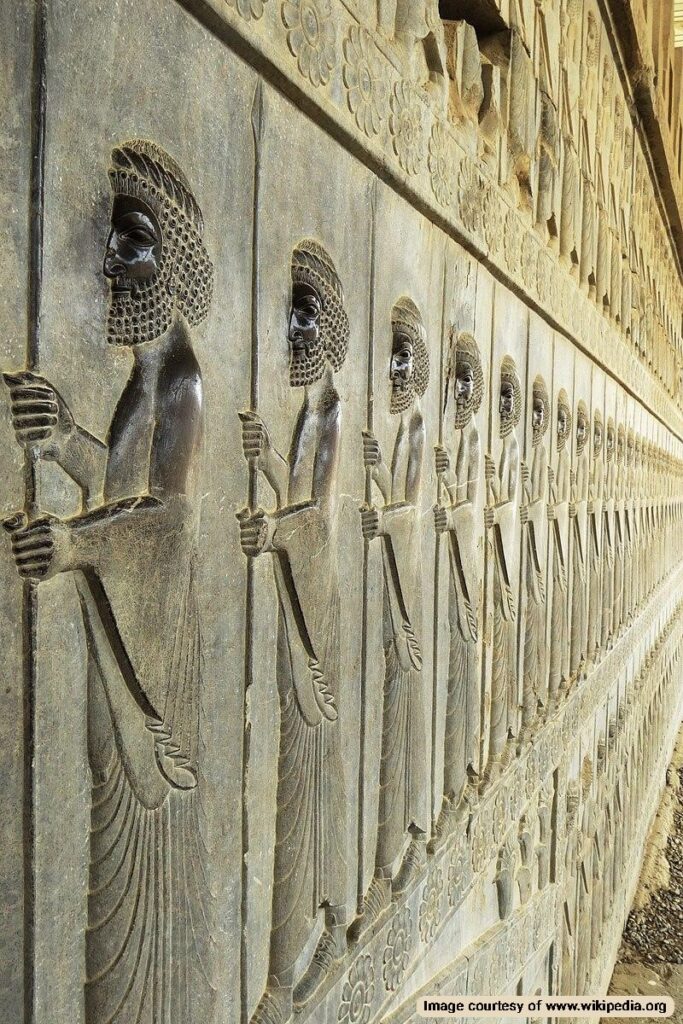
Beyond its architectural beauty, Apadana Palace serves as a living history book. The intricate carvings and inscriptions offer invaluable insights into the customs, traditions, and beliefs of ancient Persia. Visitors can explore the religious practices, governance, and daily life of the Achaemenid Empire, gaining a deeper understanding of this rich and culturally diverse civilization.
The inscriptions found at Apadana Palace provide a wealth of information about the Achaemenid Empire. These inscriptions, written in Old Persian, Elamite, and Babylonian, record the achievements of the kings, the extent of their empire, and their religious beliefs. One of the most famous inscriptions is the DNa inscription, which lists the territories under Darius the Great’s control and emphasizes his role as a just and pious ruler.
The reliefs and inscriptions also shed light on the administrative structure of the Achaemenid Empire. They depict the various officials and dignitaries who served the king, as well as the different ethnic groups that made up the empire. This diversity is a testament to the Achaemenid policy of tolerance and inclusion, which allowed them to govern a vast and multicultural empire.
Archaeological Expeditions in Apadana Palace
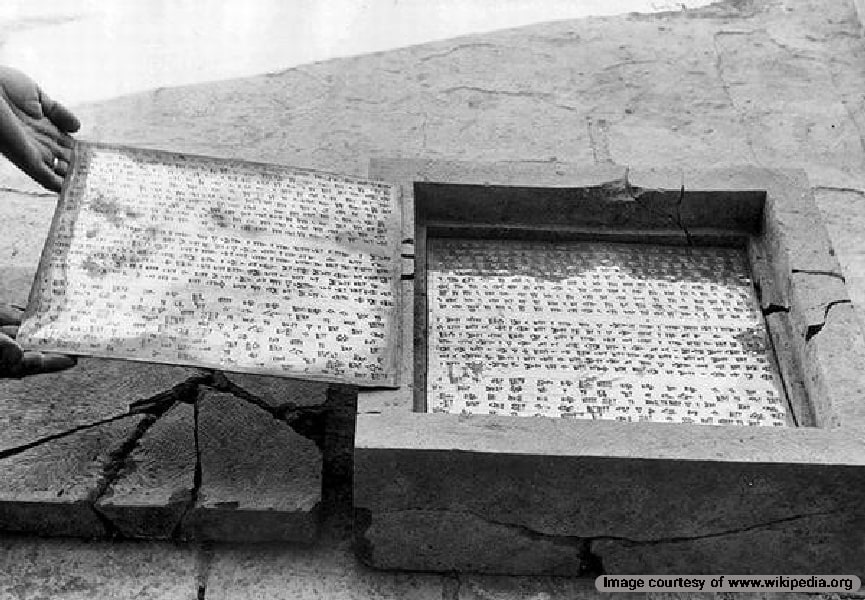
The history of archaeological expeditions at Apadana Palace is as fascinating as the site itself. The first significant excavation was conducted by the German archaeologist Ernst Herzfeld between 1931 and 1934. Herzfeld’s work was instrumental in uncovering the layout and many of the intricate details of the palace. His assistant, Friedrich Krefter, and later Erich Schmidt, continued the work, meticulously documenting their findings.
During these early excavations, Herzfeld and his team discovered numerous artifacts, including fragments of the palace’s decorative elements and inscriptions. These findings provided crucial insights into the construction techniques and artistic styles of the Achaemenid period.
In the 1970s, further excavations were carried out by Iranian archaeologists, who focused on preserving and restoring the site. These efforts included stabilizing the remaining columns and protecting the intricate reliefs from further erosion. The work of these archaeologists has been essential in ensuring that Apadana Palace remains a valuable resource for understanding the Achaemenid Empire.
One of the most significant discoveries from these excavations was the uncovering of the foundation tablets of Darius the Great. These tablets, made of gold and silver, were buried at the corners of the palace and inscribed with texts that dedicated the building to the god Ahura Mazda. The discovery of these tablets confirmed the religious significance of the palace and provided valuable information about the construction techniques used by the Achaemenids.
Visit Apadana Palace in Marvdasht, Fars Province
In conclusion, Apadana Palace stands as a timeless beacon among Iran’s tangible cultural heritage and architectural history. Its enduring legacy continues to captivate and inspire all who visit.
Destination Iran invites you to visit Persepolis and the historical Apadana Palace to have a glimpse into the legacy of the Achaemenid Empire.
Where is Apadana Palace?
Apadana Palace is located in the ancient city of Persepolis, Iran. Most Iran tours have the option to visit Persepolis. If you are visiting by yourself, the most common way to reach Persepolis is to fly into Shiraz, the nearest major city. From Shiraz, you can hire a taxi or a private car to drive to Persepolis, which is about an hour’s journey. Once you arrive at Persepolis, Apadana Palace is easily accessible within the archaeological site.
Frequently Asked Questions About Apadana Palace
If you have any other questions about Apadana Palace, please let us know in the comments. We will respond as soon as possible.
What is Apadana Palace?
Apadana Palace is a large ceremonial building in Persepolis, Iran, built during the Achaemenid Empire. It served as an audience hall and was used for the reception of esteemed guests by the kings.
Who built the Apadana Palace?
The construction of Apadana Palace was initiated by Darius the Great and completed by his son Xerxes I in the 6th century BCE.
How many columns did Apadana Palace originally have?
The palace originally had 72 columns, each standing 24 meters tall.
What materials were used in the construction of the Apadana Palace?
The palace’s walls were made of clay with a brick façade, and the inner walls were covered with glazed brick reliefs.
What is the significance of the carvings and inscriptions in Apadana Palace?
The carvings and inscriptions, found on monumental structures such as the famous Persepolis, depict various aspects of ancient Persian life, including religious ceremonies, royal processions, and scenes of everyday life. These artifacts serve as a window into the rich cultural heritage of the Achaemenid Empire, showcasing its architectural marvels and the opulence of its court.
Who were the key archaeologists involved in the excavation of Apadana Palace?
The first significant excavation was conducted by German archaeologist Ernst Herzfeld between 1931 and 1934, with assistance from Friedrich Krefter and later Erich Schmidt.
What were some of the key findings from the archaeological expeditions in Persepolis?
The excavations uncovered numerous artifacts, including fragments of decorative elements and inscriptions, which provided crucial insights into the construction techniques and artistic styles of the Achaemenid period.
What are the foundation tablets of Darius the Great?
The foundation tablets of Darius the Great are gold and silver tablets buried at the corners of the palace, inscribed with texts dedicating the building to the god Ahura Mazda. These tablets were discovered during excavations and confirmed the religious significance of the palace.






